- What it is
- The history of the appearance of hairstyles
- Do African braids spoil your hair?
- Pros and cons
- What types are there?
- African braids with a straight tip
- Pony Tail
- Corrugation
- Senegalese braids
- French patterned braid
- Thai braid
- Braids with large curls
- Zizi
- Dreadlocks
- Who is suitable for such weaving, and who is contraindicated
- General recommendations for implementation
- Self-weaving technique at home
- Necessary materials
- How to weave your hair
- Braiding with kanekalon
- How many packs of kanekalon do you need for Afro-braids on your head
- Weaving types
- Weaving with overlapping and without overlapping: what is the difference
- What is needed for weaving?
- Hair care rules
- How to unravel
- African braids accessories
- How to braid African braids at home for a child
- Is it possible to go to school with Afro-braids
- Myths and truths about Afro-braids
- Conclusion
African braids 🌍 is a bold and original hairstyle. ✨ Brave and active girls do not hesitate to braid curls in braids, 🧶 to look bright, stylish, unusual. 🎉 The hairstyle is worn for up to three months and does not require special care. 📃 Let's figure out what Afrokos are.
What it is
Afro-braids are an original and catchy hairstyle that remains in demand among men and women. It is worth mentioning that African braids are not a choice for modest individuals. The updated image cannot be hidden from strangers, it looks creative, bright and effective, plus for a while you can forget about daily styling.
Afro-braids are suitable for active and athletic people. Braiding prevents hair from getting into the eyes during sports.
It is recommended to dwell on a fashionable hairstyle for young ladies, children, in adulthood, small braids look strange and awkward. A hairstyle is also not suitable for business women, Afro-braids are associated with a playful and eccentric disposition, insolence and a challenge to everything ordinary, gray.
You can braid African braids for long and short hair. The minimum length of the strands should be 5-7 cm. If the weaving technology is not violated, you take proper care of the braids, then the hairstyle will last more than 2 months.
Note, Afro-braids are a great way to lengthen hair, visually hide the lack of volume of hair.
The history of the appearance of hairstyles
The first mentions of the hairstyle have appeared since the time of Ancient Egypt. More than 5 millennia ago, the Egyptians wore African braids, giving them a trapezoidal shape. The higher the status of the person, the longer the braids were. Accordingly, only the pharaoh could boast of the longest Afro-braids. But these were not hair of their own, but wigs.
The fact is that long hair of a bluish-black shade was considered a sign of purebredness and nobility, but because of the hot African climate, it was difficult and painful for the Egyptians to grow long hair, so they wore wigs.
The colonization and development of Africa led to the spread of plaits to America and Europe. The heyday, the peak of popularity of the hairstyle was in the 1960s, it symbolized freedom, peacefulness and racial equality.
World stars, singers and singers began to demonstrate fashionable Afro-hairstyles after 1990. Pigtails not only looked spectacular and bright, but were also comfortable to wear and required a minimum of maintenance.
Afro-braids are also popular these days. New types and techniques of weaving are constantly appearing, materials and artificial fibers are added. Pigtails are braided for adults and children in everyday life and when they go on vacation to hot countries.
Do African braids spoil your hair?
With the correct braiding and weight distribution of the braids, there will be no serious harm to the hair and scalp. Hair when wearing braids and after weaving is somewhat weakened, since it is partly not getting proper care.
With improper braiding and excessive weight, braids can lead to hair loss, hair stretching.
Pros and cons
Pros of Afrokos:
- aesthetics;
- do not require frequent washing;
- braided on any hair length;
- it is easy to diversify the hairstyle with colored strands or threads.
Minuses:
- not suitable for all types of face;
- small selection of hairstyles;
- lack of proper hair care;
- problematic sleep during habituation.
What types are there?
Today there is more than one way to create such a hairstyle. Knowing how to weave African braids at home, you can try to create an original youth hairstyle that will enrich your look with natural enthusiasm and eccentricity.
True, it is unlikely that it will be possible to perform it professionally without acquaintance with some of the secrets. One of them - kanekalon - is a modern material for adding volume to braids.
African braids with a straight tip
The most common today, but a long weaving option is the easiest to understand and execute - the classic one. The pigtail is braided in the usual way, from its base to the end point.
Its thickness depends on the selected number of parts. The execution time ranges from 4 to 6 hours. The tip of such braids is even and thin. In order not to bring it to its complete thinning, you can finish the weaving of African braids 5 centimeters before the end.
Important: if such braids are not reinforced with any kind of woven fibers, their ends will be thin and unattractive.
Pony Tail
Many people are impressed by braids ending in long strands of hair. This is a pony tail. The uniformity of the length, width and density of the elements must be guaranteed. Fluffy strands can be straight, curled, or completely curly.
Such braids can be interestingly styled by fixing them on the top of the head or on the sides. The protruding tips will add lightness and carefreeness.
Corrugation
Some are confused by the lack of splendor with braided braids on the head. Facial features are sharpened, protruding elements become more noticeable.
Therefore, a popular option is corrugation - curled braids, which resemble the wet perm known for a long time. To create this option, you need a special corrugated kanekalon.
Senegalese braids
A special version of braids, characterized by weaving of two strands. From their very base, the tightness of the braid components is ensured.
The original is the execution of Senegalese elements from two strands of different colors. In this case, you can use two shades of the same color, or you can use completely opposite options.
French patterned braid
To make the braids tight to the head, French weaving techniques are used. "French" braids (in other words, spikelets) have come into fashion long ago, representing a weaving running along the top of the scalp, from the forehead to the beginning of the neck. Gradually interwoven strands of hair allow you to make your entire head neat without tightening the hair too much, without drastically changing the direction of its growth.
Today, this method of "French" weaving has found application in numerous braids along strictly divided lines. Often in such hairstyles, African braids with threads are performed - a variant with stronger characteristics.
Variety - French braids.
Thai braid
How to make African braids without using fake strands? This suggests the option of Thai braids. The condition is the presence of native thick, long and healthy hair. In order for the hairstyle to be relevant, it is necessary to ensure their uniform length, treat with a special compound that ensures smoothness and uniform volume.
The way of fixing the tip gives a special charm to this option. It is made from a bright elastic band, thread or other small fixing hair clip.
Braids with large curls
The advantage of a hairstyle with African braids, made in the form of large curls, is obvious. With their help, a hairstyle for special occasions looks stylish.
There are two main design options:
- artificial, completely braided braids curled into curls (kanekalon in this case is processed with a special composition that allows to ensure the duration of the so-called socks);
- curls performed at the free end of the strands.
Zizi
There are also less long-term created types of African braids, for example, zizi. The length of your own hair should not exceed 20 cm; ready-made braids do not need to be added. Their execution looks stylish in a curled form. Spirals and corrugation, soft curls and small curls are possible.
A similar option is Katherine Twist - a thin pigtail designed for weaving, curled in the form of a large curl.
Dreadlocks
African-American braids, called dreadlocks, attract particular attention.
Their modern version originates among the representatives of the Negroid race. It was they who, not giving their hair proper care, involuntarily "created" a new hairstyle - dreadlocks. By nature, possessing stable curliness, they tangled and formed unkempt tangles, giving the basis
Subsequent hair growth lengthened such "braids", formed the appropriate style.
Today, a similar hairstyle is created using kanekalon. This option is called safe.
Who is suitable for such weaving, and who is contraindicated
What aspects should be considered:
- Not every girl dares to make an exotic hairstyle. The styling is quite specific and often does not include bangs. At the final stage, the face remains completely open, therefore, the model must have the correct oval. A hairstyle can emphasize the non-standard form, highlight a heavy chin, and emphasize sharp cheekbones.
- If the bangs are thick and straight, and the woman's forehead is large, then sometimes the master recommends not to weave it into braids so as not to reveal flaws.
- Whether it is worth resorting to this style for employees of offices, reputable firms, serious organizations, the question remains open. If a professional takes on the job, it is likely that from the variety of types of weaving offered, you can choose a hairstyle that matches the image.
- Afro are harmoniously combined with youthful and free, non-binding styles and with great care they are selected for glamor or austere image. It is important to take a responsible approach to the analysis of the desired hairstyle so as not to make the finished look awkward.
- Choose carefully the master, with the result of unprofessionalism, some clients have to walk for months.
Weaving Afrokos is suitable in the following cases:
- if there is a need for a radical change of the image;
- make hair longer if desired;
- when boring images are tired and you want to look stylish, bright;
- if a long tourist trip is planned;
- if desired, strengthen hair and exclude destructive factors (hairdryer, dry air, temperature drops).
Afrokos can replace a hat in winter, which is an excellent alternative for those who do not like hats.
Specialists will not undertake to apply the technique of afro-weaving if the client is diagnosed with the following pathologies:
- Frequent headaches, migraines and vascular dystonia.
- Fungal skin lesions.
- Psoriasis foci, neurodermatitis, seborrhea.
- Pediculosis.
- Alopecia.
- Scalp wounds (scratches, abrasions, scars).
Important! Afrokos cannot cause loss of large amounts of hair. As in the free state, up to 150 hairs are lost daily in such weaving, and this is considered the norm. In place of the fallen out bulbs, new hair begins to grow almost immediately.
General recommendations for implementation
Weaving braids is a simple procedure, but it requires scrupulousness and accuracy. In order for the Afro-hairstyle to turn out beautiful and not disheveled in a week, listen to recommendations of professional hairdressers:
- pigtails turn out neater if you slightly moisten the strand with water or apply a special mousse before weaving;
- styling with thin braids will last longer;
- a wig with pigtails or a bun of zizi, attached to the head, will help determine: whether the chosen image is suitable for you or not;
- to lengthen the curls, use kanekalon, zizi, and other artificial materials;
- bright artificial inserts make the hairstyle original, will allow you to trim the ends, you do not need to resort to dyeing your hair;
- it is better to braid African braids from a professional, this is the only way to guarantee the safety of the hairstyle for the stated period of time;
- weaving is performed according to the brickwork pattern (staggered) to avoid large gaps;
- choose a scheme, a type of Afro-braids in advance, it is almost impossible to correct it in the process of transformation, it is necessary to interweave the braids again;
- you should pull on the braids during weaving in moderation, then they will turn out beautiful and even;
- 2–3 days before changing the look, wash your hair, it is more difficult to weave Afro-braids on clean hair, the strands will knock out, fluff and give the hairstyle a sloppy look.
Self-weaving technique at home
It will take 6-10 hours of work to form a large number of harnesses. It will take less time for a master with experience. However, women are able to get the job done without outside help. To get a better home result, we advise you to involve a friend in the process.
Necessary materials
Visit a specialist store and ensure that all tools and materials were at hand:
- hairbrush;
- overhead strands or threads;
- glue for braids;
- small elastic bands.
Step-by-step photo instructions will tell you how to braid a lot of braids at home. Observing the technique step by step, they fill their hand and get the result faster.
How to weave your hair
It is easier to braid stale hair as it is less friable. If the head is washed, experts recommend using styling - moisturizing agents.
- The hair is combed, the surface is visually divided into segments. They start from the lower parietal zone. Having chosen the first strip, partings are marked. Braids are woven from each square.
- The bundle of hair is divided into three strands and the side fragments are fixed with the little finger, and the middle one with the index finger. Further braiding is performed according to the principle of a regular braid to the desired length. You can give preference to weaving in a direct or reverse way (turning the strands in the opposite direction).
- As a result, each braid is fixed with a small elastic band.
- The time takes from 10 to 12 hours.
Important! In the course of work, the tension of the weaving should be the same, which will make it possible to obtain bundles that are uniform in volume.
Braiding with kanekalon
How many packs of kanekalon do you need for Afro-braids on your head
Afrokos with kanekalon are woven in different ways. Because of these, the amount of material changes. On average, to create a hairstyle, you need from 400 to 700 grams of material. Some masters advise sticking to 600 grams. The more material, the more stress on the skin and roots.
- Classic Afro - 600 grams.
- Senegalese - 500 grams.
- Zizi - 600 grams
- Braids - 500 grams
Weaving types
There are two types of weaving - on the frame (braids) and point.
- Point - a small strand is isolated and a pigtail is woven into it. From the root comes its own hair color, which is mixed with the color of the kanekalon. Markings on the scalp in the form of squares are visible. Elapsed time up to eight hours.
- Frame (braids) - a frame is created from the hair, braids are braided from the forehead to the back of the head and ready-made braids are already attached to them. This technique takes less time, from two to three hours.The color remains solid along its entire length. The markings are less visible.
Weaving with overlapping and without overlapping: what is the difference
Full overlap weaves take longer. But this technique allows you to hide your hair color. There will be only kanekalon on top, natural hair remains inside. It takes more time to create a hairstyle.
A braid pattern looks different in the overlapping technique. Without overlap, it is more elongated, the links are larger, the hairs are knocked out faster when worn. With overlapping, small links are obtained and they are denser, native hair does not knock out when worn.
What is needed for weaving?
- Kanekalon itself, small rubber bands, comb - this is the minimum, everything is clear here.
- Strand Separator (I used the end of the brush) - to separate partings.
- Moisturizing spray - to make it easier to work with strands, a very, very valuable item! Somehow I didn’t see any talk about him, but in vain. I sprayed both synthetic strands and my own, so that the material was not so much confused, so that the strands were smoother and more pliable.
- Indelible care, preferably oily - also to facilitate the process, to protect your hair in your hairstyle. An interesting fact, curly young ladies (I assume that they have African roots) actively use styling wax. Just so that the strands do not flicker and are woven into the hairstyle easier.
The materials themselves are of great importance, especially if you are doing braids for the first time, like me. I would like to make the process of braiding and socks as easy as possible. This means that good elastic bands are also needed, because the first ones I came across were not very strong. Kanekalon should also be enough so as not to be left with under-braided braids. Do not regret the unwashes, they greatly simplify the process, it is better not to skimp for yourself, your beloved.
Hair care rules
Improper care of Afro-braids shortens the period of their wear. Pigtails look sloppy and sloppy, they lose their presentable appearance. The recommendations of hairdressers for hair care will help to avoid this:
- wash your hair once every 1–1.5 weeks, not more often. Use a shampoo for normal hair. No conditioner or balm;
- Drying with a hairdryer, especially hot air, is prohibited. As a result, under the influence of temperature, the artificial inserts may unravel, and the pigtails will look disheveled. After washing, wrap the braids in a terry towel to absorb moisture;
- update your hairstyle every 1.5-2 months. The master will correct slipped knots, partially relieve the hair of the fluffy hairstyle;
- going to the sauna, bath is highly undesirable.
How to unravel
To get rid of braids, it is not necessary to go to the master. Although, hairdressers insist on professional help, which reduces the risk of hair injury.
Your initial task is to release (untie) the knots of artificial weaves. To do this, cut off the knots with the ends of the hair with scissors. Then gently, prying with a sharp object, gradually unravel each braid. Slowly comb through the curls, starting at the ends.
Attention! Do not be intimidated by profuse hair loss when braiding the braids, this is a normal reaction.
After what period of time to untwist the braids depends on the client's desire and the type of Afro-braids. Keep in mind that wearing your hair longer than the recommended period is dangerous for the health of your hair.
As a rule, after African braids with artificial inserts, your own curls look rested and lush.
If the braiding was performed in violation of the technology, it was too tight, there is a risk of getting weakened and dry hair, there is a prolonged and excessive hair loss, slow growth, dullness and lifeless appearance.
African braids accessories
To decorate a hairstyle from afro-braids, you can use various beads, beads, Swarovski crystals - along the entire length or only at the tip, sequins, colored ribbons. It is not recommended to decorate more than five braids so as not to overload the hairstyle and hair with unnecessary elements. Hairpins and hairpins, dense elastic bands are suitable for assembling hairstyles from braids.
How to braid African braids at home for a child
Weaving afrokos for a child does not differ from the usual technique. It is important not to overtighten your hair or wear your hair for more than two weeks. Weaving through braids is more suitable for children, since this technique takes less time, and it will be quite difficult for a child to sit for 4-6 hours. It is also undesirable to use kanekalon or acrylic close to the scalp - it can cause an allergic reaction.
Is it possible to go to school with Afro-braids
The exact answer to this question depends on the policy of the school. Some grammar schools and schools have a strict dress code, which also prohibits unusual hairstyles. In general, if there are any claims from the educational institution, Afro-braids will be a good option for a child to emphasize their uniqueness.
To cause less resentment from teachers, you can use a kanekalon that is close to the color of your child's hair.
Myths and truths about Afro-braids
Myth 1. Hair falls out from the weight of the woven material or under its own weight
Each person drops up to 100 hairs every day, and woven and fixed in braids, they do not have such an opportunity. Therefore, when you untwist your hair in 2-3 months, they will all fall out all at once.
Myth 2. Afro-hair damage
During wearing, your hair does not split, does not undergo thermal styling and various other daily procedures, so no harm is caused to them.
Myth 3. Pigtails tighten the scalp very much, headaches appear
I highly recommend doing Afro-hairstyles from an experienced, proven master, moreover, tested on someone from your acquaintances. Not necessarily the most expensive or advertised in your city. The master himself must see what thickness of braids is optimal for your hair, and this, in turn, will determine how much the braids pull the scalp and make their hair heavier.
Conclusion
Afrokos are fashionable, stylish, but time-consuming and expensive to braid. They are not suitable for everyone, but skill is needed to weave them. Correctly braided Afro-braids will keep your hair looking good for up to three months.











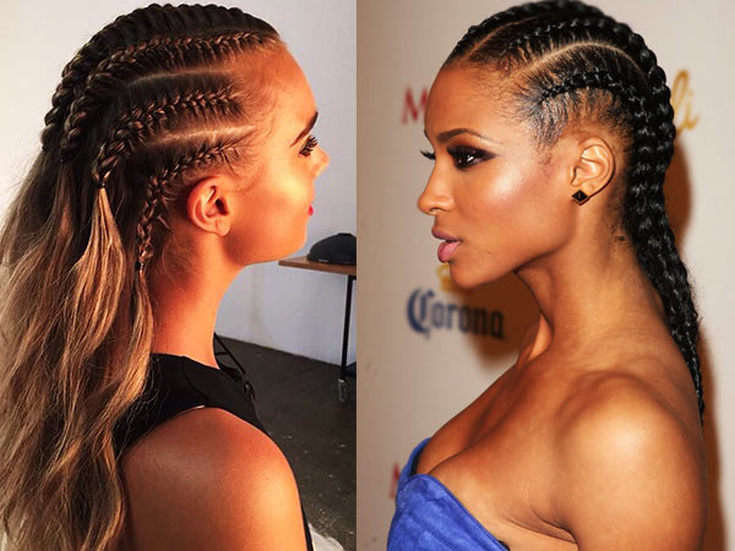
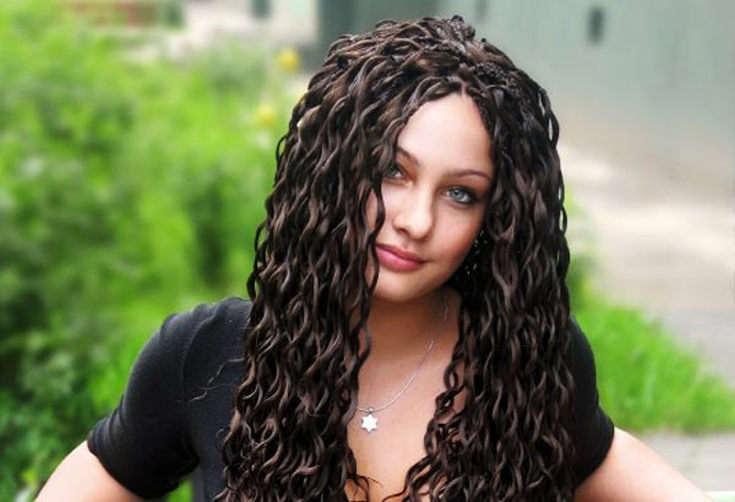
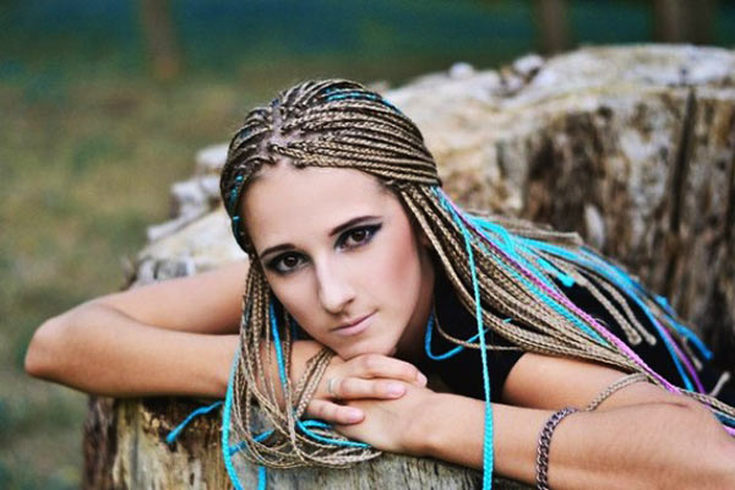
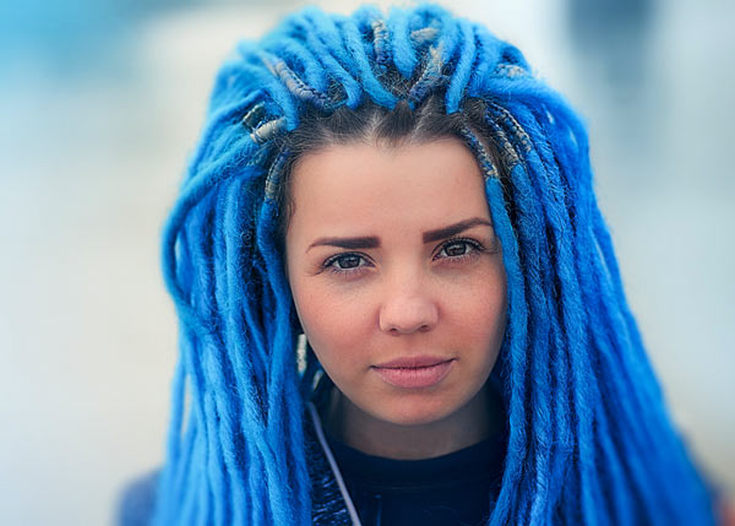
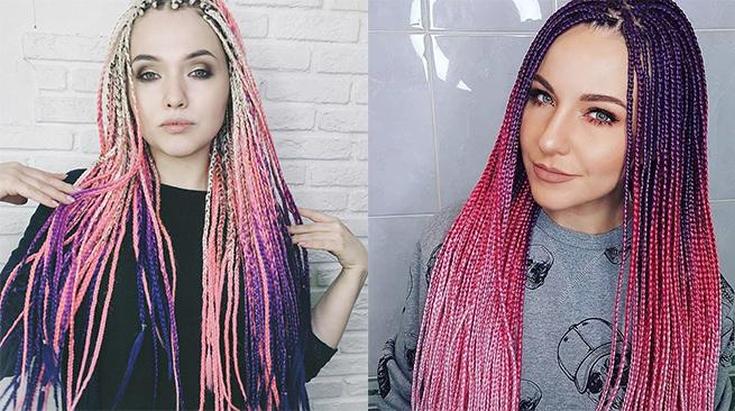
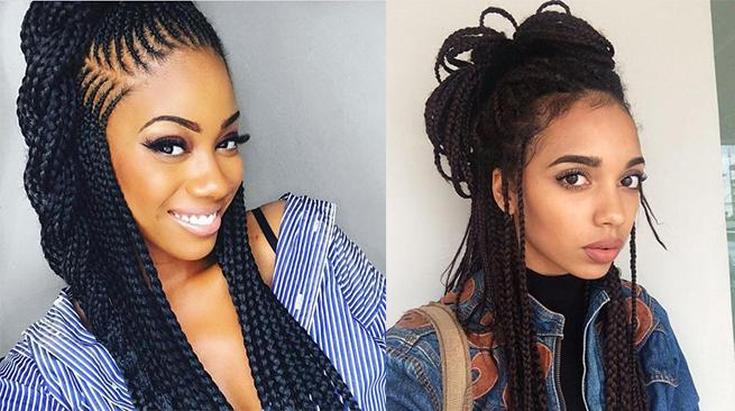
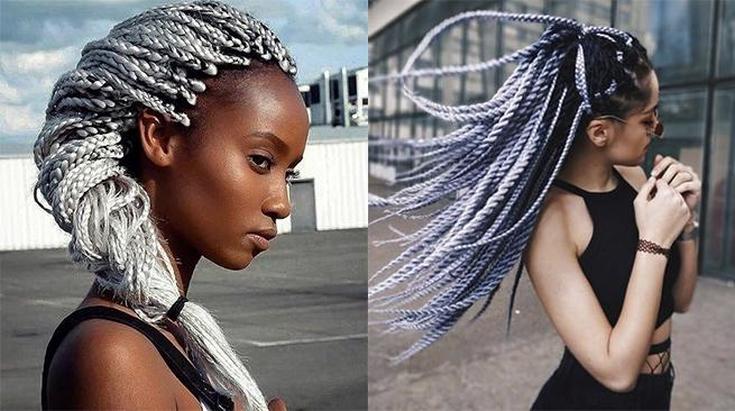

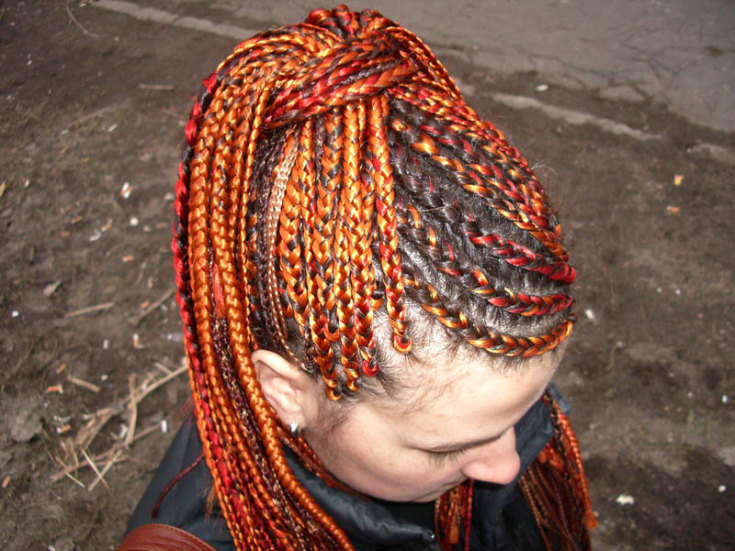
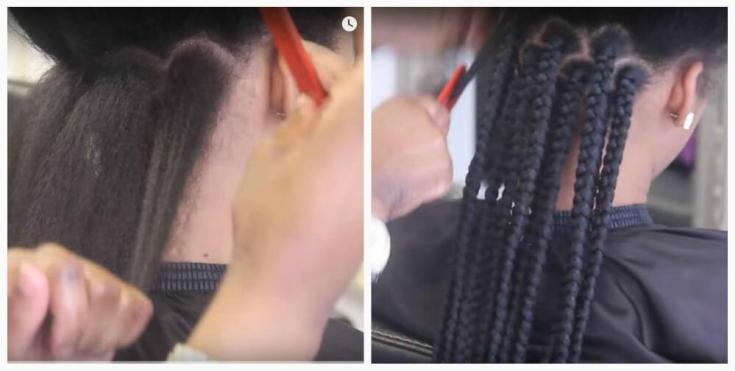
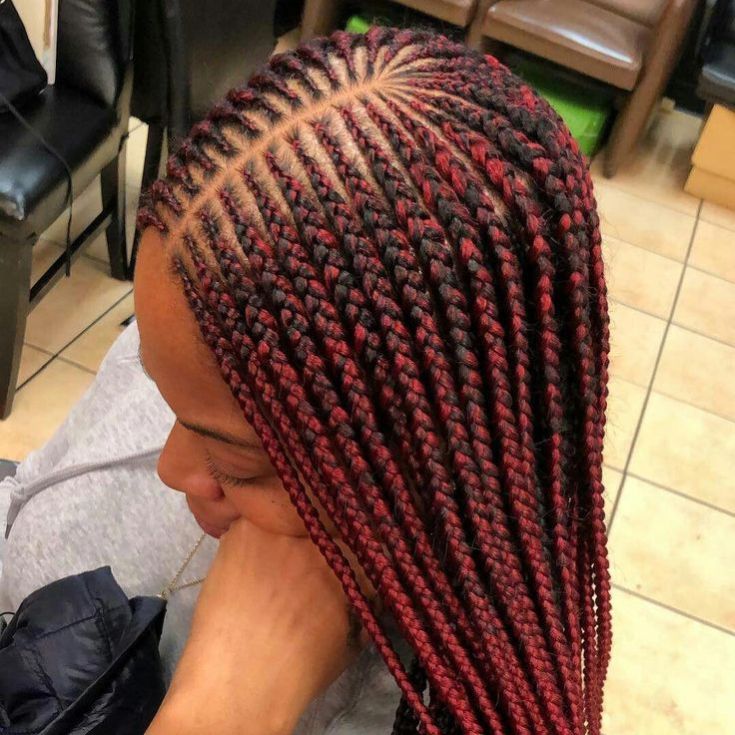
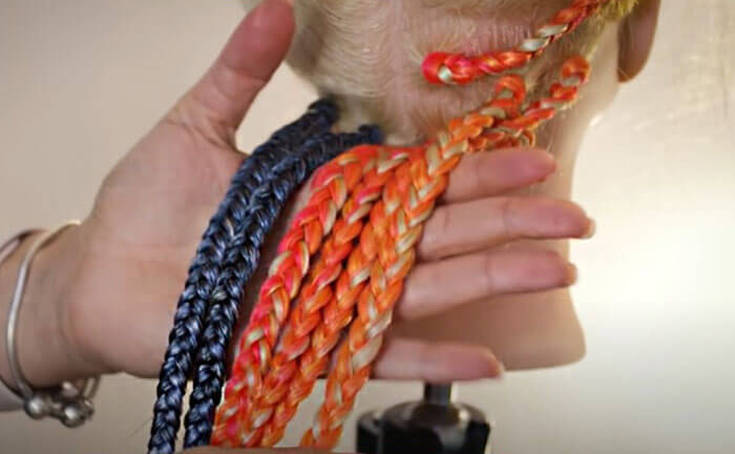
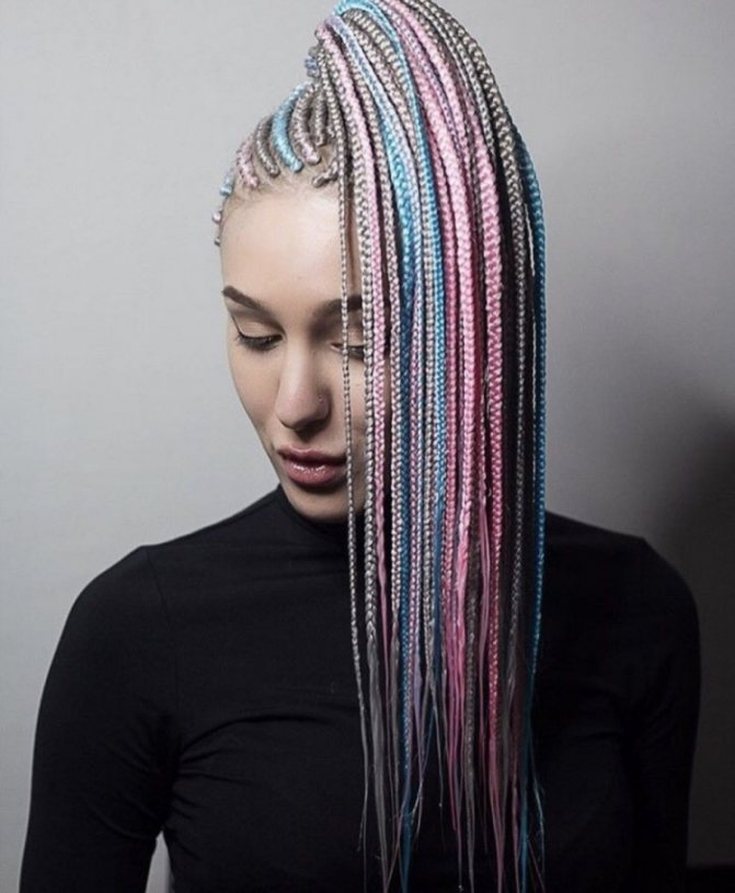

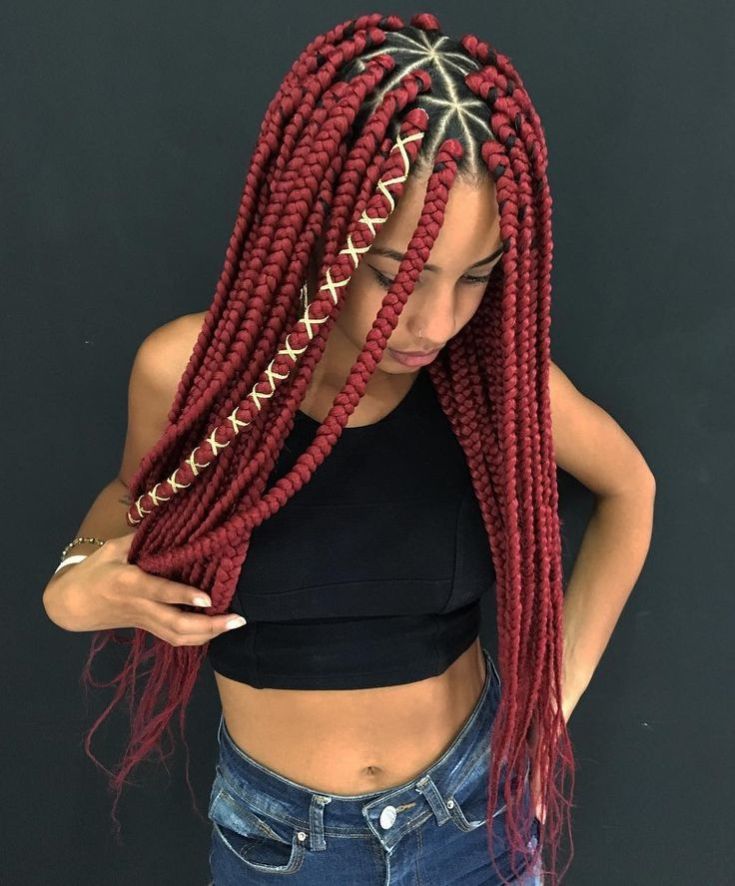




I want a braid hair from knit and how much does it cost?
kapets they are cool, I myself will make these too !!!!!!!!!!!!!!!!!!!!
Lash African braids from 3000
I weave pigtails from 3000 thousand, Almaty Kazakhstan, my Instagram pricheski_with_love, write to direct, I also weave boxing braids and ordinary braids, thanks)))